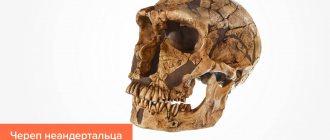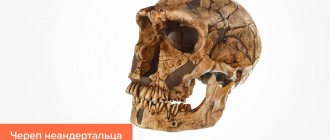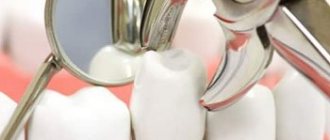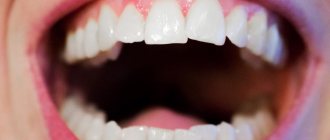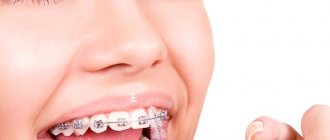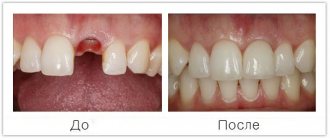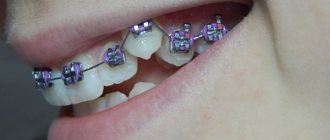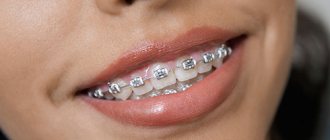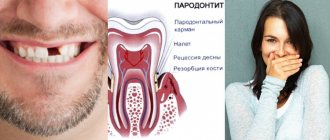Groups of substances
The elements of the human chemical composition are divided into two large groups of mineral substances, namely: microelements and macroelements. The latter include potassium, calcium, phosphorus, magnesium, chlorine and sulfur, as well as other substances.
Requirements for microelements are limited to small quantities. These substances include iron, iodine, zinc, copper, fluorine, cobalt, manganese.
Each substance included in the chemical composition of a person has its own function and purpose, and must be supplied to the body in a certain amount with food. With a lack of elements, a variety of disruptions occur in the normal functioning of the body.
Human body composition
Scientists have been able to determine exactly what a person consists of. The chemical composition of our body, in accordance with the analysis of biologist J. Henson, includes 375 million hydrogen atoms, 132 million oxygen atoms and 85 million carbon atoms, three molybdenum molecules and one cobalt atom. We have this set at the moment of birth. During life, the ratio of chemical substances changes, their quantity increases, and new elements appear, such as metals and gold.
The scientist made unusual calculations. As a result of the analysis, Henson was able to find out that the human body contains so much oxygen that it will be enough to fill a volume equal to six elephants, and carbon - 16 kilograms. There is so much hydrogen that you can fill a container equivalent to the volume of a whale, and nitrogen - 400 liters.
The human body can become a source of income. According to the scientist's calculations, if the average person preserves his nails throughout his life, he will be able to extract gold from them, worth about a tenth of a US cent.
In addition to gold, the body contains more than 60 elements. If you isolate them in their pure form and sell them on the market, you can earn about a couple of thousand dollars.
Write a formula for the location of teeth with their names in young and adult cattle.
In the formulas, teeth are designated by the first letters of the international nomenclature: incisive teeth by the letter I, canines by C, P by premolars, M by molars. Molars do not have deciduous predecessors. The number of upper teeth on one side of the mouth is indicated in the numerator, and the number of lower teeth in the denominator.
Cattle teeth formulas:
dairy: I0C0P3 / I4C0P3 × 2 = 20,
constants: I0C0P3M3 / I4C0P3M3 × 2 = 32.
Methodology for calculating average daily gains in cattle.
The growth rate of animals at different periods of life is not the same. A distinction is made between absolute and relative growth. Absolute growth is understood as an increase in live weight and measurements of young animals over a certain period of time (day, decade, month, year), expressed in kilograms. The absolute growth of animals is the difference between the final and initial body weight. The absolute average daily increase in live weight over a certain period is determined by the formula:
where A is the average daily increase in live weight (g) or measurements (cm); W0 is the initial weight (kg) of the animal or the initial measurement value (cm); W1—live weight of the animal at the end of the period; t — time.
The absolute increase in a unit of body mass per unit of time does not characterize the true growth rate. For this purpose, the relative increase is calculated, which is expressed as a percentage and calculated using the formula:
Optimal and actual duration of use of cows and bulls. By what indicators is it determined? What losses do farms incur when cows are culled early?
A valuable biological property of animals - the ability to live a long productive life - is not widely used in practice. In most breeding and commercial farms, animals are kept for a short time. The age distribution of 18,260 cows of black-and-white and Simmental breeds belonging to collective and state farms located in the area of the Krasnokutsk, Ekaterinovsk and Krasavsk breeding stations of the Saratov region was studied. In these farms, the first-calving cows were 19.9%, the second - 17.9, the third - 11.9, the fourth - 12.1, the fifth - 10.9, the sixth - 9.4, the seventh - 6.9, the eighth - 4.5, ninth - 2.6, tenth - 2.2, eleventh - 0.9, twelfth and older - 0.8%. L.K. Ernst, K.V. Markova, N.P. Semenov and V.T. Samokhin, having processed data on the valuation of animals in breeding farms (90.4 thousand cows in total), found that the average duration of productive use of cows in breeding farms of the Ministry of Agriculture of Russia is 4.01 lactations, in educational farms of agricultural institutes - 3.72 and in experimental farms of the All-Russian Academy of Agricultural Sciences - 4.15 lactations. According to A. Aleshin and V. Kazakevich, in the ten main breeding farms of Belarus, the average age of all cows used is 4.4 lactations; According to R. A. Baltakmens and L. Efros, on collective and state farms in Latvia, cows are used for an average of 4-5 lactations. The same duration of use of dairy and dairy-meat cows in the country as a whole. N.M. Kramarenko and I.P. Semenova, having analyzed materials on livestock assessment for 5 years, determined that the life expectancy of cows in breeding farms of the Russian Federation is equal to 3.58-4.02 lactation for the black-and-white breed, and for the Kholmogory breed - 3.58-4.02 lactations. 4.32-4.40, for the Swiss - 3.72-4.42, for the Simmental - 3.44-4.27, for the Sychevsky - 3.79-4.57 and for the Kostroma breed - 3.59-3 .73 lactation. On commercial farms and dairy complexes, the average duration of use of cows is even shorter. These data indicate that cows are used on average only until they are 7-8 years old. Cows do not survive until the sixth or seventh lactation, when they exhibit the highest milk production and produce good offspring. The shelf life of bulls is even shorter than that of cows. For example, at the Chelyabinsk, Chebarkul, Troitsk and Berdyaush artificial insemination stations of the Chelyabinsk region, the average life expectancy of black-and-white bulls is 6 years and 2 months, and the average duration of use is 4.5 years; at 12 breeding stations in Belarus, the average life expectancy of black-and-white bulls ranges from 4 years 1 month to 6 years 8 months. At artificial insemination stations in the Leningrad region, black-and-white bulls are used for an average of 5 years; at the Crimean Regional Breeding Station, only 14.6% of bulls that received a breeding category when assessed for the quality of offspring are aged 6 years and older. Consequently, a significant part of the bulls-improvers leave the production workforce during the period when they reach full physical development and high reproductive ability, shortly after they are assessed for the quality of their offspring.
The duration of use of breeding stock on farms largely depends on the size of the annual culling of animals. With early culling, even of animals with relatively high productivity, the material costs of raising, feeding and maintaining them are recouped by selling the animals for meat. This, however, is not true. The costs of raising and maintaining short-term animals, discarded and used for meat, are reimbursed only by 50-60%. Heads of collective and state farms and zoo specialists must take decisive measures to protect animals from premature ranking and culling from the herd. The length of production life of animals is not taken into account in the cost of the resulting offspring and products produced and is not economically encouraged in any way. It is necessary to establish material incentives for farm managers, animal health specialists and all livestock workers for long-term breeding and production use of farm animals, while maintaining their high productivity.
Other substances
The human body contains a lot of oxygen. We get it not only from the air, but also from water. It is the most important component of the body, without which life is impossible.
In second place in terms of quantity is carbon. The human body contains a huge amount of it. There is more of it only in oil and coal.
About 10% of our body is hydrogen. It enters the body with water and air. Three percent of the composition is nitrogen.
The main part of amino acids and coenzymes is sulfur. This substance with an unpleasant appearance and odor is found in the human body in fairly large quantities. In addition to sulfur, we also consist of another poison - chlorine, or rather, chloride. This element is found in blood plasma.
Interesting Facts
If there is a deficiency of any substance, the human body ceases to function normally. Thus, even a hundredth part of iron deficiency can lead to the development of anemia. Normally, men contain more of this element than women. This is connected not only with nutrition, but also with the physiology of the body: during menstruation, women lose a significant proportion of iron.
Scientists are still not entirely sure that fluoride is necessary for the human body. This element is found in large quantities in teeth and bones. But fluoride, like selenium, is very toxic in overdose.
How many teeth does a person have - numbering in dentistry, dental formula
From this article you will learn:
- How many teeth should a person normally have?
- in which cases there are fewer teeth,
- human dental formula: diagram, numbering of teeth.
Human teeth can be temporary or permanent. Temporary (baby) teeth normally begin to erupt in children from 8 months to 3 years of age. In total, the child must erupt 20 milk teeth - 10 teeth in the upper jaw + 10 in the lower jaw.
Starting from the age of 6, temporary teeth begin to gradually fall out, and permanent molars erupt in their place.
Most permanent teeth erupt between the ages of 6 and 12, and only the eruption of the last 8 teeth (wisdom teeth) usually occurs between the ages of 17 and 21.
In total, an adult can erupt 32 teeth - 16 teeth in the upper jaw + 16 in the lower jaw.
Teeth of a child and an adult on x-rays –
Thus, how many teeth a person has depends on age. Normally, at the end of the eruption of all temporary teeth in children, there will be 20 of them. Then the period of replacing milk teeth with permanent teeth begins, after which a person will normally have 32 permanent teeth (read about exceptions below).
For detailed information about the timing of teething, read the article: → “When do teeth erupt in adults and children”
Numbering of teeth in dentistry: scheme for adults and children
The numbering of teeth in dentistry seems to be a very interesting point, because... a patient can often hear or read in a medical card that the doctor treated his 37th or 42nd tooth (although there are only 32 of them). The fact is that tooth numbers in dentistry do not correspond to simple ordinal numbers from 1 to 32 in adults, and from 1 to 20 in children.
- Numbering of teeth in dentistry: scheme for adults, please note that the formula of teeth in the picture is always oriented in the same way as the doctor sees your teeth when you sit in a chair (i.e. if in the picture the 16th tooth is in the top left, then it will be at the top right of you). This is done to make it easier for the doctor to fill out the dental formula.
- Numbering of teeth in dentistry for children (Fig. 4) - baby teeth in children are displayed according to the same principle as in adults, but their numbering starts from tooth 51 to tooth 75. This is not very convenient for patients to understand, but it allows you to clearly differentiate between baby and permanent teeth when filling out medical documentation (to avoid errors).
Formula of teeth in the medical record –
The dental formula of an adult (as well as a child) - in the medical record of a dental patient, looks like a schematic table (as in Fig. 5), which will reflect only the serial numbers of permanent or baby teeth. Right in this formula, the doctor will mark missing teeth, teeth with caries, teeth under crowns, etc.
Dental formula in the form of a table in the medical record –


